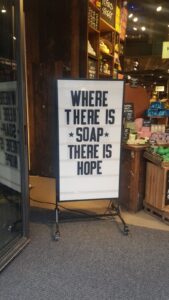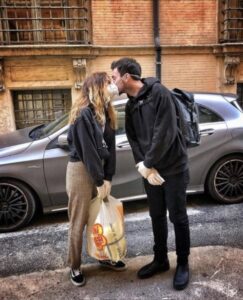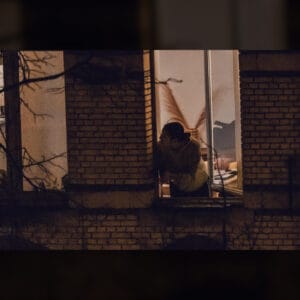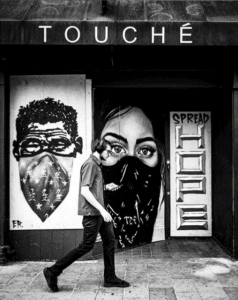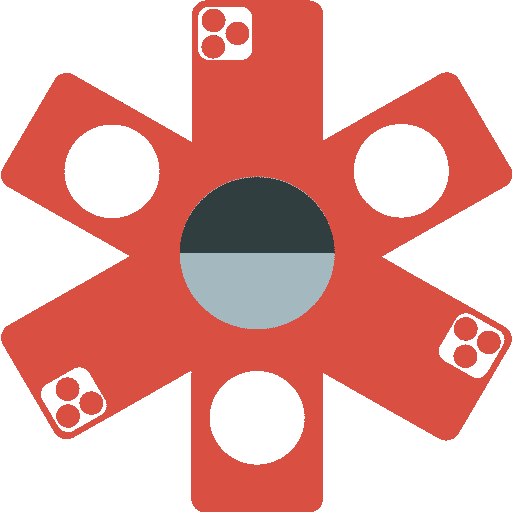
Not The Gear
Home of Covid Street
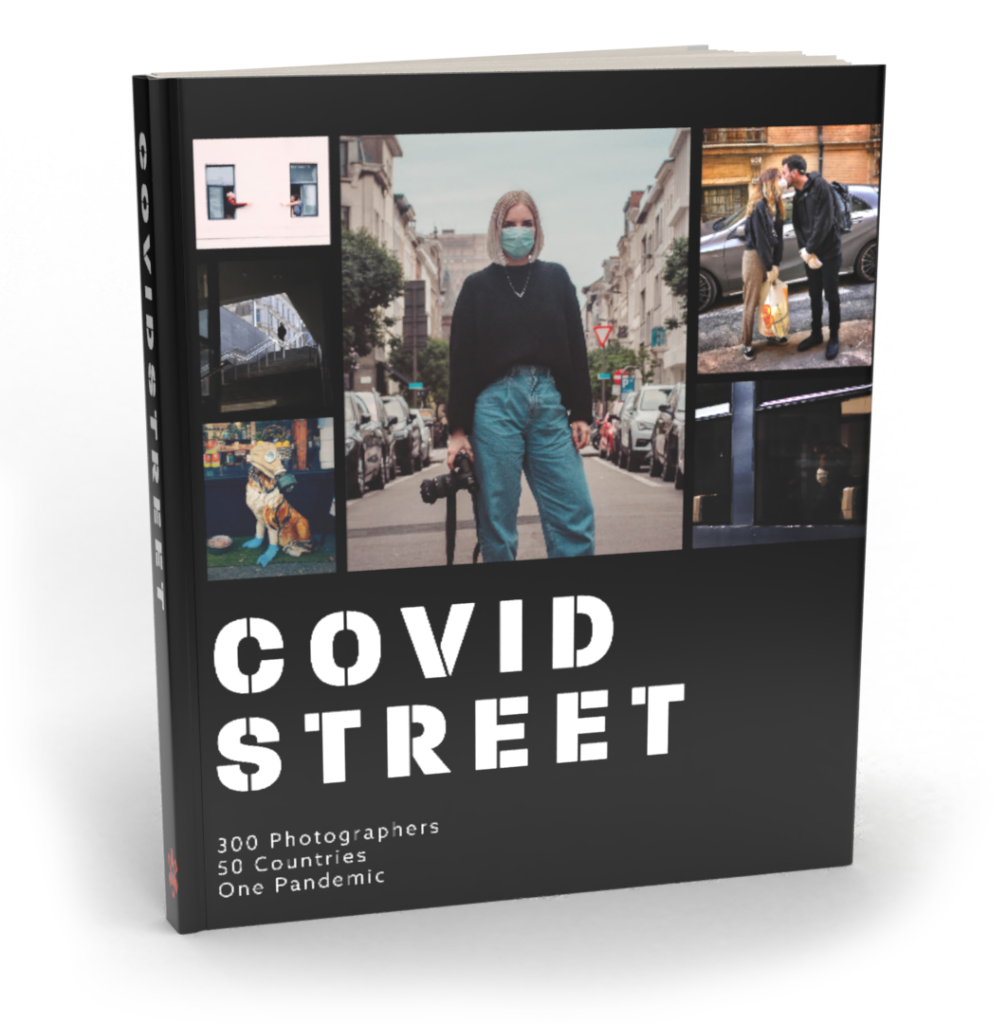


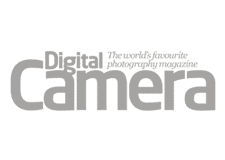

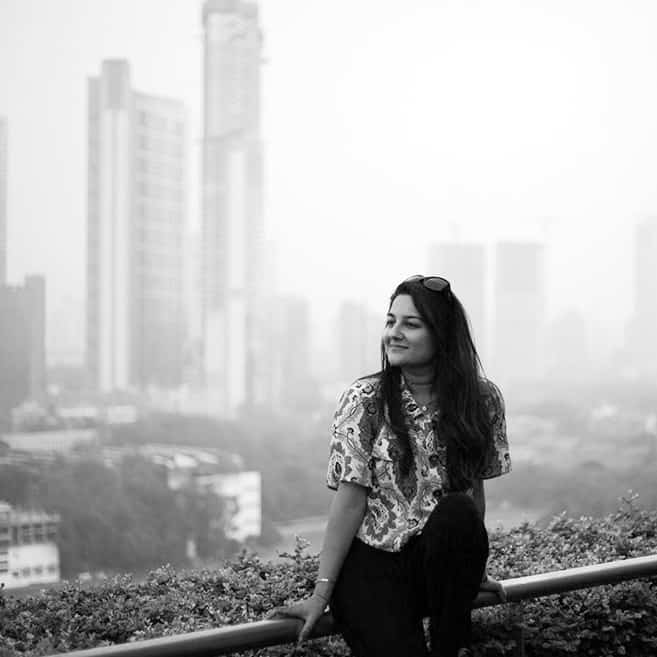
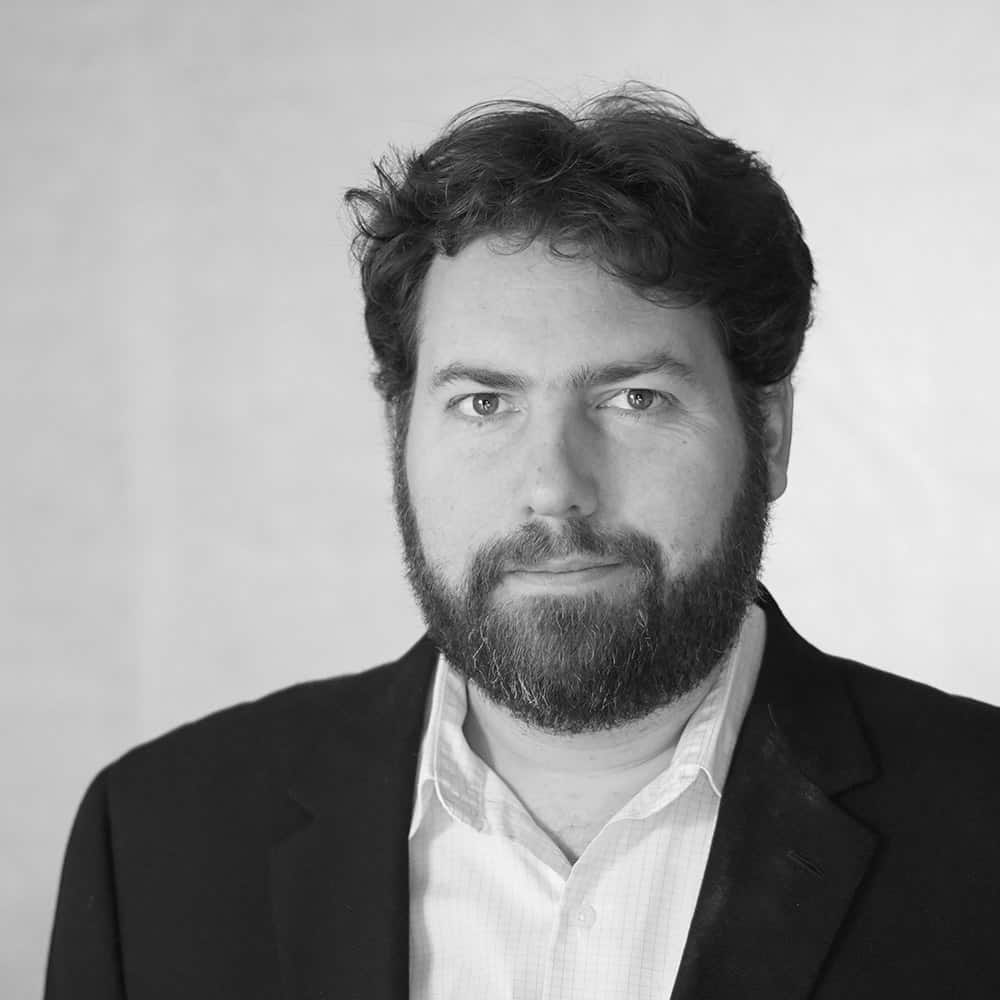
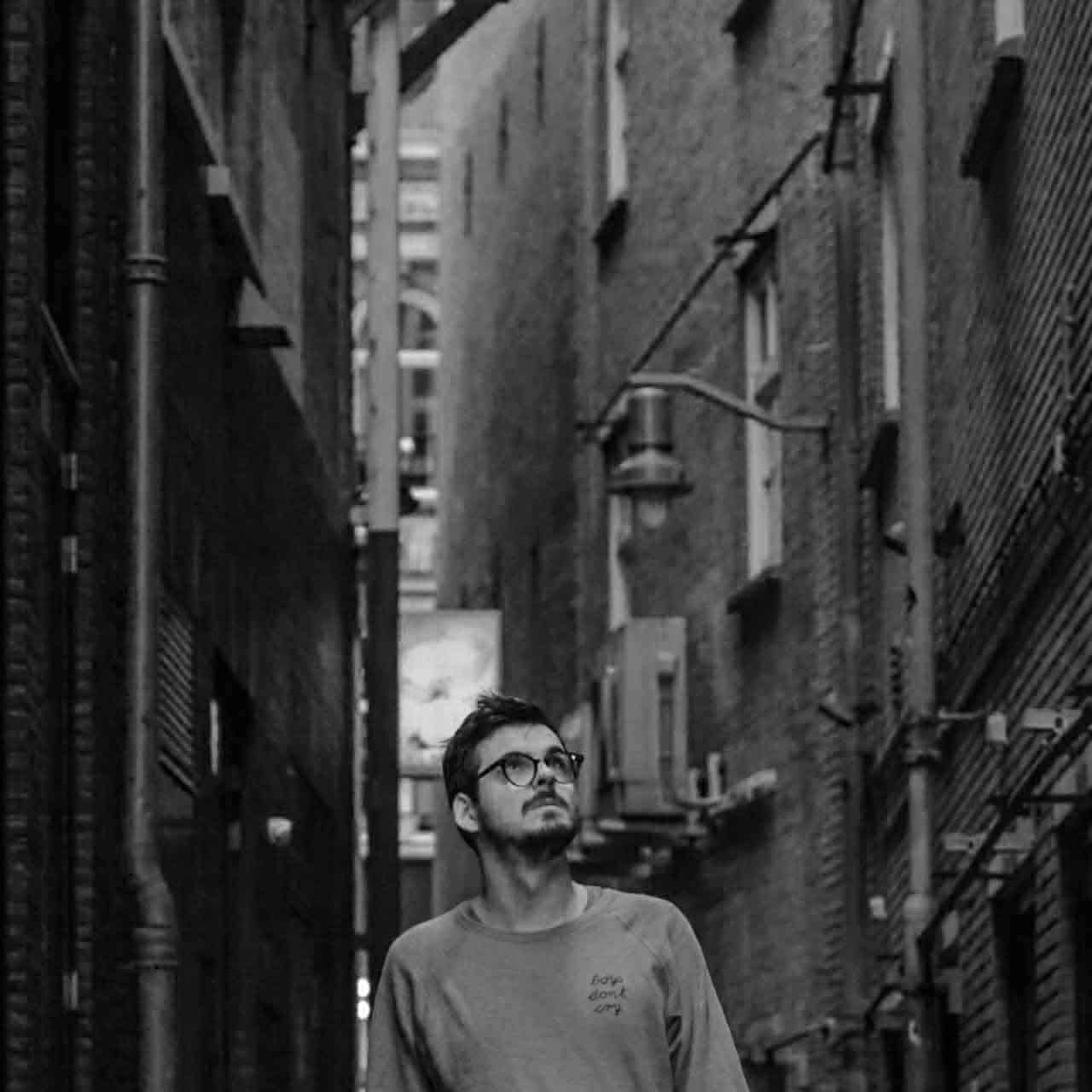
What is the book’s specification ?
We’re using the popular 245x210mm format with (at least) 192 pages. This is a nice size, allowing us to reproduce vertical and horizontal format images at a good size.
Can I still get my photo in the book ?
We’re planning on finalising the interior in late August, so no, it’s not too late. You’ll get an email after purchase with contact details.
Will the book have any words ?
Yes! As well as a bit of an origin story for the project, we’ll make sure every photo gets a caption which explains where it was taken and what the circumstances were.
What charity are you supporting ?
Because we are selling around the world, we are supporting different charities, split between healthcare and those offering grants to creatives affected by the virus.
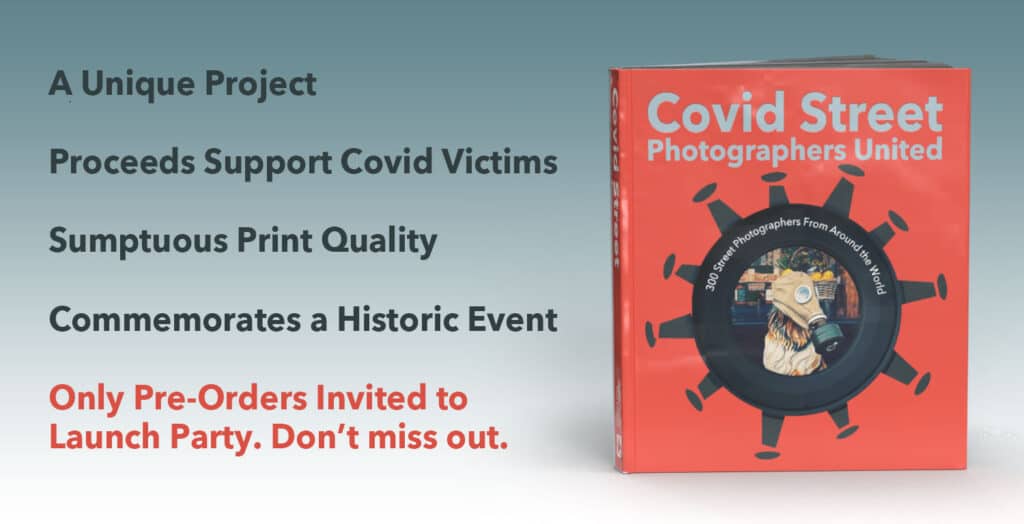
Covid Street is a unique project, which brought together street photographers from around the world in the height of the unprecedented Covid-19 pandemic. This book is a collection of images and captions that tells a global story, through hundreds of carefully curated moments, each of which offer insight, inspiration, and hope.
Or learn more…
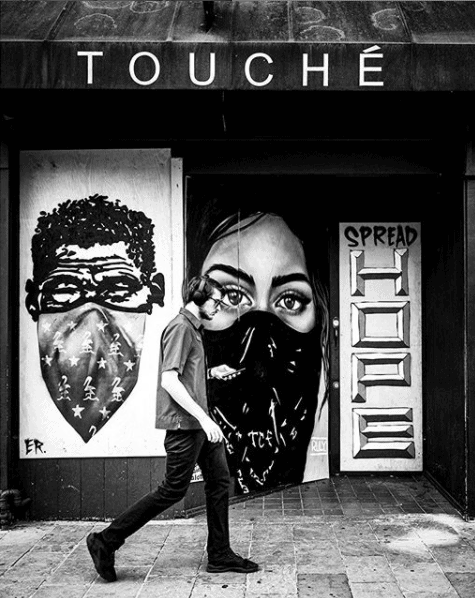
The photographers, who have generously donated their time and work to this book, represent an exciting variety of perspectives and styles which lift you beyond the narrow perspectives of your media or the art establishment.
CovidStreet has been active on Instagram since March, but the goal has always been to produce a printed book from which proceeds can support Covid victims in the creative space. As of June/July 2020, it’s not too late to submit your photo; learn how below.
The book is presented as a beautiful hardcover. No expense will be spared on the printing or format, using quality printing and binding – not a digital-to-print internet service.
This special first edition will ship to you before the first anniversary of Covid-19, in December, and will include a commemorative jacket. We understand that is quite some time to wait, but by buying this special first edition now, you can ensure we — as street photographers — retain control of this special testament.
Not only that, but we’ll keep you up to date with the design and printing process regularly (but not too regularly!) and – if you choose – credit you in the book.
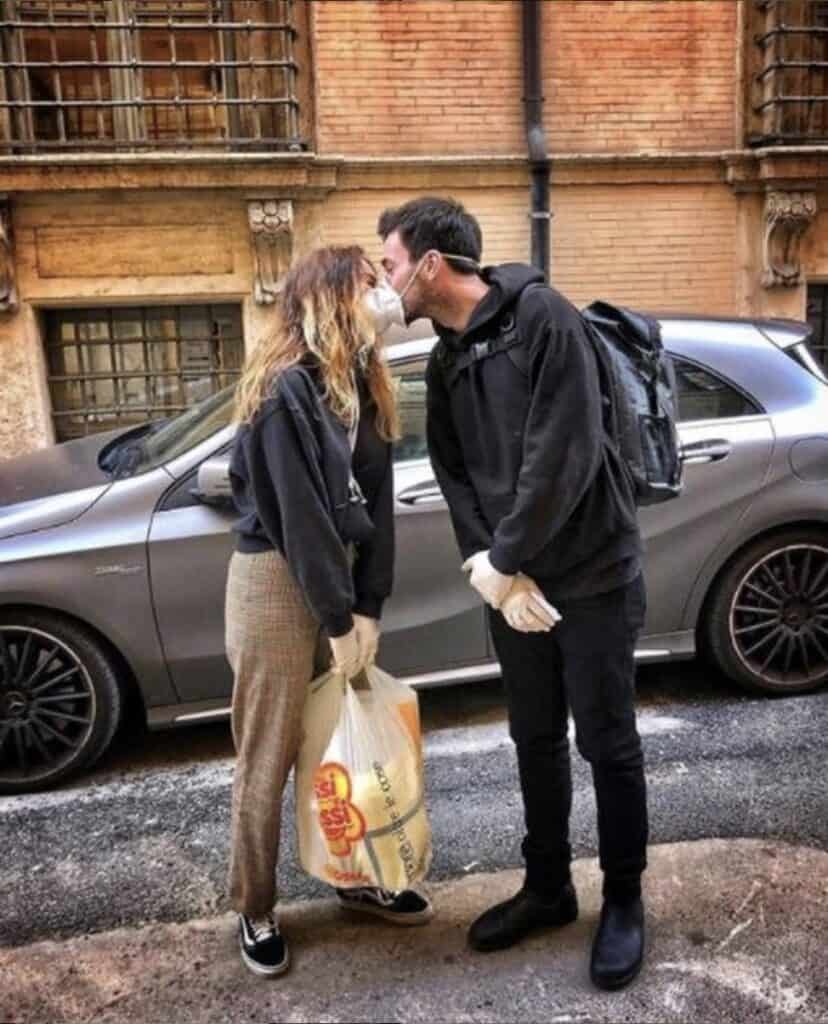
Without pre-selling, we would be forced to cede editorial control to an outside editor, and risk having our selection compromised by commercial interests. Buy buying now, while we’re still preparing the book, you increase our strength, giving us the option to print where free speech is valued. Never has that been more important.
While a project like this has been time-consuming and costly, profits from the sale of the book will be donated to charities tackling the repercussions of the pandemic.
Contributing photographers, among the most financially affected groups, will also receive a share of revenue.
Reported around the world…
Since we launched Covid Street in March, we’ve been widely covered by major publications in Belgium, the UK and the USA, and our hashtag has taken on a momentum of its own.



If you’ve been inspired but aren’t ready to order yet…

Melissa Robinson (@Foreverseen) joins the Covid Street team in our special series.
Melissa’s story is striking because she’s travelled so far, and done so much, only to find herself having to make yet another creative change because of the onset of Covid and the lockdown.
Undeterred she has masked up and set out to volunteer in Williamsburg, New York (just North of Brooklyn) and has even captured that shooting and volunteering experience on a body-camera.
She’s also managed to capture some great lockdown images of New York, including a Grand Central station in which the pigeons have taken over.
It seems nothing can stop her.
To see more of her fashion work, check Mel’s own site, Forever Seen.
Images by Mel “Forever Seen” Robinson
Mel’s Video Volunteer Body Cam
Actually the volunteering video seemed to be unavailable, but this is another shot during the Covid pandemic.
The first thing you need to know if you’re looking for an SLR (or DSLR) in 2020 is that definitely isn’t your only choice. It was for a long time, which is why you might have heard the term. But times change.
Why do you think you want an ‘SLR’?
SLR stands for Single Lens Reflex – a ‘D’ at the front adds the word ‘Digital’. In either case what makes this kind of camera different is that you compose the photograph by looking directly through the same lens that the photo is taken. That’s the Single Lens.
The word Reflex comes from the path the light is taken on through the camera while you’re looking through the viewfinder. The principle is a little like a periscope – it comes down the lens onto a mirror, then from that mirror to your eye. (It’s a little more complicated, since a special prism is required to ensure your view is the right way up, but that’s semantics).
When you take the photo the mirror which directs the light up to the eye pops out of the way so the light can go straight to the image sensor (or film). That’s why everything goes dark in the viewfinder when you take the shot, and the camera makes quite the clicking noise.
The alternative, common on many film-era compact cameras (and ‘rangefinder’ cameras), is that you would look through an additional lens just above the ‘photography’ lens which was just for framing your shot. This approach might be thought of as like a rifle with a telescopic sight – the sight and the gun barrel are pointed in the same direction, but you’re not actually looking through the barrel.
Why isn’t an SLR necessarily best any more?
Digital technology effectively eliminates one of the big plusses of the SLR – composing through the lens. Since a digital camera uses the image sensor to provide a preview, all digital cameras (phones and compacts) allow you to compose through the main lens.
The other associated advantage of SLRs has never actually been exclusive to them – that is interchangeable lenses (the ability to swap the optical elements of the camera for ones optimised for different purposes; wide angle for interors, long zoom for wildlife, macro for close up, wide aperture portrait lenses and so on.
Over time ‘systems’ built up from the leading manufacturers. Canon owners bought Canon lenses for the Canon ‘mount’, while Nikon owners needed lenses compatible with the Nikon mount, and so on. Lenses are often more expensive than the cameras they attach to and (if looked after) last for years.
When Digital photography arrived, and image sensors slowly started to meet the standards that photographers needed, most were concerned with getting Digital SLR ‘bodies’ (the camera other than the lens) which they could fit their existing lens collections onto.
One big issue at this point which deserves an entry in itself is that image sensors need not be the same size as 35mm film. Almost all film SLRs shot 35mm film, just like most compacts and disposables of the era (ignoring APS for the moment). All you need to know now is that the term “full frame” refers to an image sensor which is the same size as 35mm film, and this was an expensive aspiration in the early days of digital.
Anyway, a digital SLR still does the whole mirror-flipping business, so the body requires the extra size to accommodate the mechanism, but realistically we no longer really need it. The upshot is the arrival of the term ‘mirrorless’.
What is a ‘mirrorless’ camera?
Technically any camera which doesn’t have an SLR mirror-flip arrangement is mirrorless (even the disposable on the table at that hipster wedding you went to), but in this context it refers to a high-end camera which still has interchangeable lenses but only has a digital viewfinder.
It’s common to have a screen on the back – like pretty much any digital compact camera – and a small digital screen in a hood in the place a traditional SLR viewfinder would be. The latter is easier to use in bright sunshine, and perhaps more re-assuring for old-school photographers, but the camera bodies can be smaller.
Perhaps the stand-out example of the mirrorless camera is the Sony A7 series. In the last decades of film Canon and Nikon had established a pretty firm dominance of the photography market, which was cemented as smaller manufacturers struggled to match their investment in digital cameras. But Canon and Nikon were also pulled by the momentum of their existing lens systems.
Sony bought struggling Konika-Minolta but quickly abandoned their SLR system for the A7 and A9 series of cameras which are mirrorless but use ‘full frame’ sensors.
Designing a new camera system from the ground up which didn’t focus the light on a point far enough back I the camera body to allow room for a SLR mirror meant a new series of lenses anyway, so Sony could have gone with any image sensor they liked. Other firms did, like Olympus, Panasonic and others did with the Micro Four Thirds (MFT) system.
Smaller sensors allow for smaller lenses and lighter cameras, but also (if you assume the same resolution) smaller sensitive elements of the imaging chip means there will be more digital noise in the photo.
Sony, however, seemed to appreciate that the term ‘full frame’ was going to work for their marketing teams and allow them to get ahead of Nikon and Canon for a time. Both other firms have now developed and launched their own Mirrorless systems (with adapters to allow the use of the older lenses).
So which should I choose?
OK, so Sony have established themselves in this market, and many of the other brands have positioned themselves for certain kinds of photographer. Leica has always made iconic rangefinder cameras, so the rise and fall of digital SLRs has no doubt been of mild amusement to them, for example.
But if you were thinking of getting your first SLR, the chances are you were imaging spending roughly the same money as the entry-level SLRs with lenses were before Mirrorless brought options.
Sony A7 ii
No longer the current model (replaced with the even-more-expensive A7iii) but if you’re not especially excited by shooting 4K video this might be the choice for you. The A7 has a fantastic image sensor (bigger is better!) and focusing system, making it great for stills, and while the kit lens (lens included with the camera) is only OK given, the camera body features image stabilisation so you can shoot in less-than-perfect light without a tripod or the expense of a better lens.
Canon EOS M50 or M6 Mkii
Canon’s competitors for the Sony A7 cameras are, well, pricey. But they’ve opted to also produce a smaller mirrorless series which is targeted at the kind of market they formerly pitched their consumer Digital SLRs at. With a standard lens this can be had for less the Sony, and while it might not boast the same image quality, or offer the future advantages of Sony’s full-frame system, it is definitely a step up from that camera-phone, and additional lenses are available. It does also manage 4K if you want to look your sharpest on YouTube!
Sony A6000 series
Just as with the Canon M series, Sony offer interchangeable lens cameras which don’t blow the whole budget on a massive sensor. The A6000 series is a great start, and budget can dictate how recent the version you get is When shopping, do be careful to choose a kit that includes at least one lens!
Do you really need to swap the lens?
Swapping lenses is great for flexibility, but it can also draw you into a never-ending cycle of lens acquisition. There’s much to be said for a single purchase.
For example, the Panasonic Lumix DMC-FZ1000EB is a ‘Bridge’ camera which includes a single lens which can go from pretty wide to prettifying far zoom. It can also shoot 4K video and has a fold out viewfinder and a hooded eye one. The Canon PowerShot SX70 HS is another good alternative in this space.
Guest Jacopo Rufo joins us from Italy as we explore the impact of Covid on photographers around the world.
Tom Clabots, co-founder of CovidStreet, returns to join co-hosts Adam and Tanya in what is the second of a series linked to the Covid Street project, which is also celebrating a major milestone.
In this episode, just some of the treats are:
- Pigeons v Air Rifles v Lockdown
- Musings on humanity will react to lockdown lifting
- The advantages of renting gear
Guest
Born in 1990 in a small village in central Italy, Jacopo is a graduate of Cinema & Visual Arts of Rome University and has spent the last decade travelling the world shooting photography for numerous clients. His personal work “Concerns life in big cities, the aim of my work is to capture the ancestral and archetypical essence of existence nowadays eclipsed by the complexity of our society.”
He has been trapped in the strict Italian lockdown and contributed some of the most popular images on Covid Street through his window.
His links.
Joining Adam Juniper & Dan M Lee this week is special guest JR DeSouza of Outex, the camera waterproofing system company. Between JR and Dan we discover a few surprising things about the ‘camera condom,’ including its uses in the Covid crisis.
We also explore setting the experience of setting up Outex, a camera equipment company built by camera enthusiasts, including the benefits (or otherwise) of running a Kickstarter.
Finally, we round off with a book give away of Dan’s latest book, Creative Photography: The Professional Edge. To take part in that, simply sign up to our email list here:
And please don’t forget to follow the Covid Street account Adam mentions…
Here’s the Outex product we discuss on the show:
Links
Listen to the Episode
In this special episode of the Podcast, Tanya Nagar returns to launch a special project with me and first-time guest Tom Clabots, a photographer based in Antwerp, Belgium.
The three of us have spent some of our isolation establishing @covidstreet, a place where we can come together and document the developing crisis around the world, while staying within the rules, and with the ultimate goal of producing a book that we can sell to raise money to help in the aftermath.
If that sounds a big ask, well, you can read more about the plan or, of course, listen to the podcast.
Chapter List
| Chapter | Begins | About |
| 1 | 00:00 | Greetings, and introducing Tom Clabots. |
| 2 | 01:10 | The beginning of the Covid Street idea, and why we chose Instagram to get started |
| 3 | 08:56 | A bit about our early experience |
| 4 | 14:53 | We finally explain the entire plan. |
| 5 | 37:12 | How you can not only follow but become a part of @covidstreet. |
| Outtakes | 41:22 | Just some examples of how bad things could have got if we’d recorded for longer! |
Some of the images we talk about
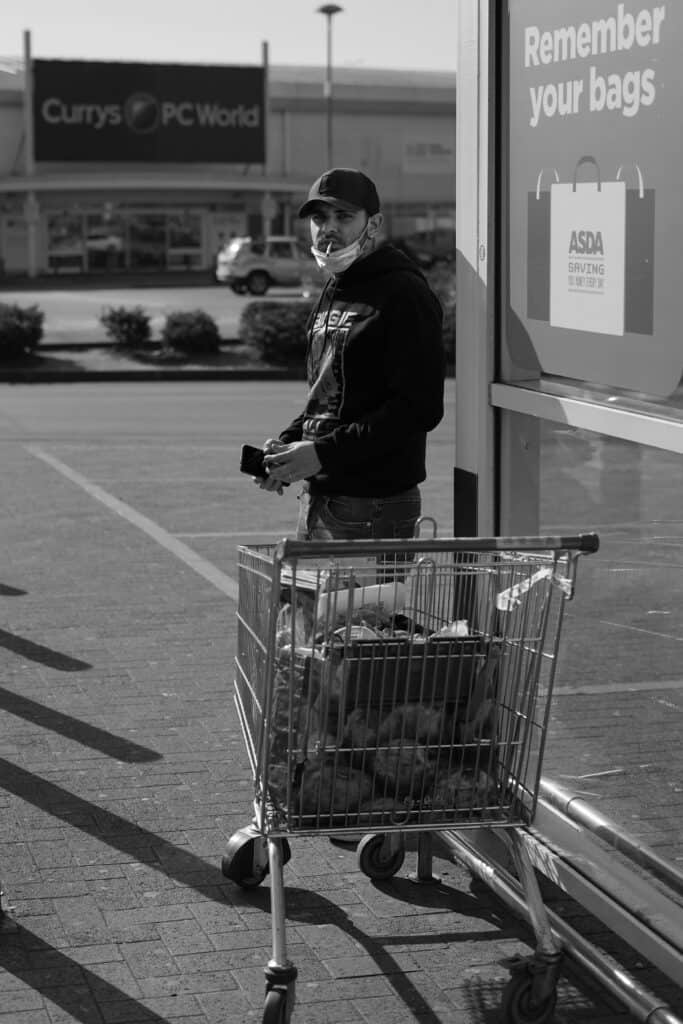

Some examples on the feed…
As well as the three of us, capturing Covid from Croydon, Leyton & Antwerp, we have been joined by a number of other photographers, who’s work you’ll find when you start to explore the Instagram feed, and our Stories.
Specifically, we’ve been joined by @i_abdulmunaff in Hydrabad, India, @joeseth.carter in London Fields, @clickte_raho, Delhi, India, @rollerzoomph in Madrid, Spain, @admphotography17 in Rome, Italy, @delcourt.charles in Brussels, @ipons in Milan, Italy, and @itsmewalterc in the USA, to name just a few. Again explore the feed to see everyone and everywhere.
Plus, if you’ve seen something we haven’t, and want to join in, have a listen, see if you like us, and (I’m sure you will), go ahead and get in touch, or just share by tagging us on your posting and we’ll call you!
This week Dan and Adam are getting used to the Lockdown, and coming up with some ways of using the time well.
After some inevitable banter – don’t worry, aggressively edited – we get down to offering some ideas for how you could use your downtime to become a better photographer with lower monthly outgoings.
Of course, you might reasonably say “I don’t have any down-time” – either you’ve just become a full-time parent-teacher, or you’ve still got a lot of work. But, for a lot of us, new work is lessening, at least for now, and we still get a few moments to get some stuff done. Between us, we’ve slashed our monthly bills without losing any services we’ll miss!
We also take a look at the Sony World Photography Awards. Given his views on competitions, it could be interesting! You can see the gallery we’re talking about here on DPReview.
Oh, and I’m pretty sure I manage to get at least a mention of my latest book! Learn more here.
